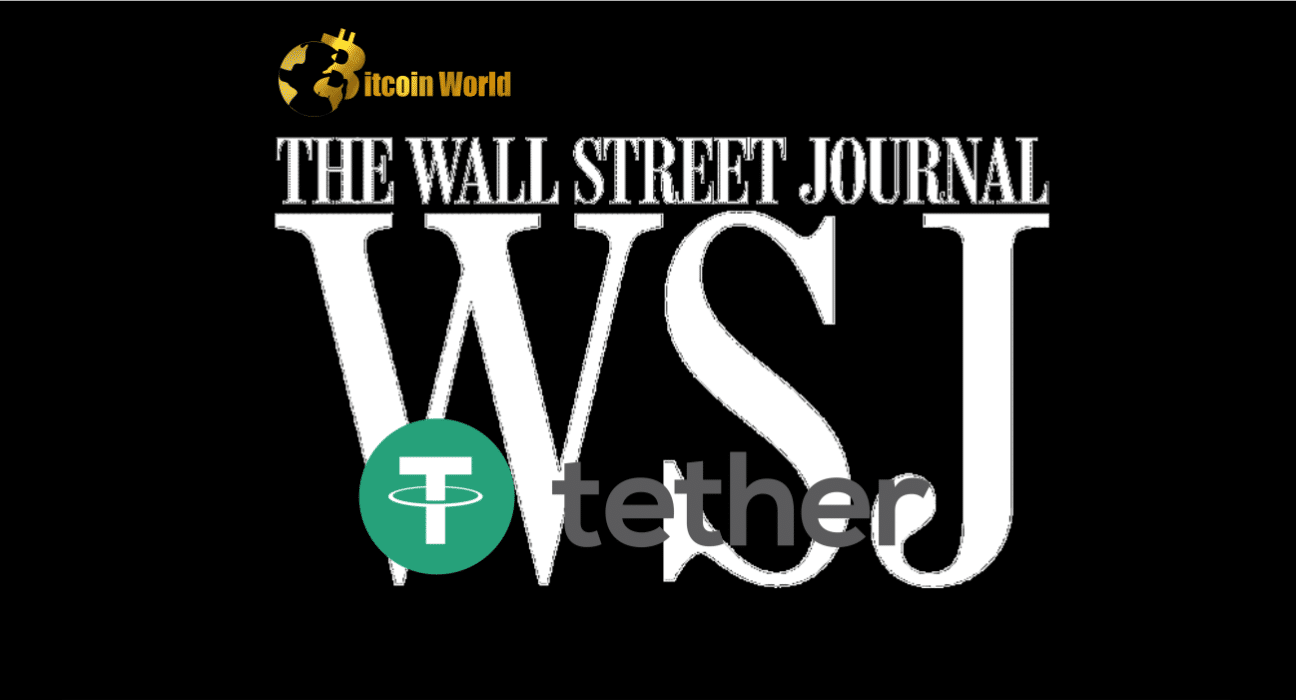Hold onto your hats, crypto enthusiasts! The ever-controversial stablecoin giant, Tether, is once again in the eye of the storm. A fresh Wall Street Journal (WSJ) report has dropped, alleging some serious financial maneuvering behind the scenes. Are these claims valid, or is it just another round of ‘FUD’ (Fear, Uncertainty, and Doubt) targeting the crypto world’s most prominent stablecoin? Let’s dive into the details and separate fact from fiction.
What Exactly Did the Wall Street Journal Report?
On March 3rd, the WSJ published an explosive article based on leaked emails and documents. The core allegation? That Tether, the company behind USDT, and its sister exchange Bitfinex, engaged in some less-than-transparent practices to maintain access to the traditional banking system. Specifically, the report claims they:
- Fabricated Sales Invoices and Transactions: The WSJ alleges that Tether and Bitfinex created fake documents to process transactions and open bank accounts.
- Used Front Companies: To obscure their direct involvement and bypass banking regulations, the report suggests they utilized intermediary companies.
- Circumvented Banking Systems: The goal, according to the WSJ, was to maintain crucial banking relationships that might have otherwise been severed due to regulatory scrutiny.
According to the WSJ’s sources, these actions were driven by the need to stay connected to the traditional financial system. Why? Because losing access to banks would be a major, potentially ‘existential,’ threat to Tether and Bitfinex’s business operations.
Tether’s Swift and Strong Rebuttal
Tether didn’t waste any time firing back. In an official statement released on the very same day, March 3rd, they vehemently refuted the WSJ’s claims, dismissing them as:
- “Stale allegations from a long time ago”
- “Wholly inaccurate and misleading”
Tether emphasized their commitment to compliance, stating that both Bitfinex and Tether operate with “top-notch compliance programs.” They assert they rigorously adhere to all relevant laws concerning:
- Anti-Money Laundering (AML)
- Know Your Customer (KYC)
- Counter-Terrorism Financing (CTF)
Furthermore, Tether portrayed themselves as cooperative partners with law enforcement, highlighting their willingness to assist authorities both domestically and internationally. Paolo Ardoino, Tether and Bitfinex’s CTO, echoed this sentiment on Twitter, labeling the WSJ article as filled with “misinformation and falsehoods.”
The Wells Fargo Connection and Lawsuit
Interestingly, the WSJ report connects these alleged banking maneuvers to a lawsuit Tether and Bitfinex previously filed against Wells Fargo bank. This lawsuit itself hints at the difficulties Tether and Bitfinex faced in maintaining banking relationships. The WSJ suggests the leaked documents shed light on the strategies employed to overcome these challenges and stay within the financial system’s good graces.
Money Laundering and Terrorist Ties?
The allegations take a darker turn with claims that Tether and Bitfinex had links to a company accused of being a money-laundering front for a US-designated terrorist organization. These are serious accusations that, if proven, could have significant legal and reputational repercussions.
US Attorney’s Office Investigation
Adding another layer of complexity, the article mentions that the U.S. Attorney’s Office for the Southern District of New York is reportedly leading a Justice Department investigation into Tether. The exact nature and scope of this investigation remain unclear, but it underscores the regulatory scrutiny Tether is currently under.
A History of Scrutiny and ‘FUD’
This WSJ report is not the first time Tether has faced intense scrutiny. Over the past few months alone, the company has had to address several critical articles, including:
- Another WSJ piece in February: This report highlighted that a small group of individuals had significant control over Tether since 2018.
- WSJ Article on Secured Loans in December: This article raised concerns about Tether’s lending practices using its reserves, leading Tether to commit to ceasing such lending activities.
These instances, alongside general market volatility and concerns about Tether’s reserves backing USDT, contribute to the ongoing ‘FUD’ surrounding the stablecoin. But is this ‘FUD’ justified, or is Tether unfairly targeted?
Navigating the Murky Waters: Compliance in the Crypto World
The situation highlights the incredibly complex landscape of compliance for cryptocurrency companies, especially those dealing with stablecoins that aim to bridge the gap between traditional finance and the digital asset world. Maintaining banking relationships is crucial for these businesses, but navigating the regulatory maze and satisfying traditional financial institutions’ compliance demands is a constant challenge.
Key Compliance Challenges for Crypto Firms:
- Evolving Regulatory Landscape: Crypto regulations are still developing and vary significantly across jurisdictions, making it difficult to ensure consistent global compliance.
- AML and KYC Requirements: Stringent AML and KYC procedures are essential to prevent illicit activities, but implementing them effectively in a decentralized and often pseudonymous environment is complex.
- Transparency and Audits: Building trust requires transparency and independent audits, particularly for stablecoins that claim to be backed by reserves.
- Relationship with Traditional Finance: Bridging the gap between crypto and traditional banking requires building trust and demonstrating robust compliance frameworks to risk-averse financial institutions.
What Does This Mean for the Future of Tether and USDT?
The WSJ report and the ongoing investigation add another layer of uncertainty to Tether’s operations. While Tether vehemently denies the allegations and emphasizes its compliance efforts, the scrutiny is unlikely to subside anytime soon. The outcome of the US Attorney’s Office investigation and further regulatory developments will be crucial in determining Tether’s future trajectory and the broader perception of USDT in the market.
For now, the crypto community watches closely, navigating the ongoing ‘FUD’ and waiting for more clarity on these serious allegations. One thing is certain: the debate around stablecoin regulation, transparency, and compliance is far from over.
Disclaimer: The information provided is not trading advice, Bitcoinworld.co.in holds no liability for any investments made based on the information provided on this page. We strongly recommend independent research and/or consultation with a qualified professional before making any investment decisions.


